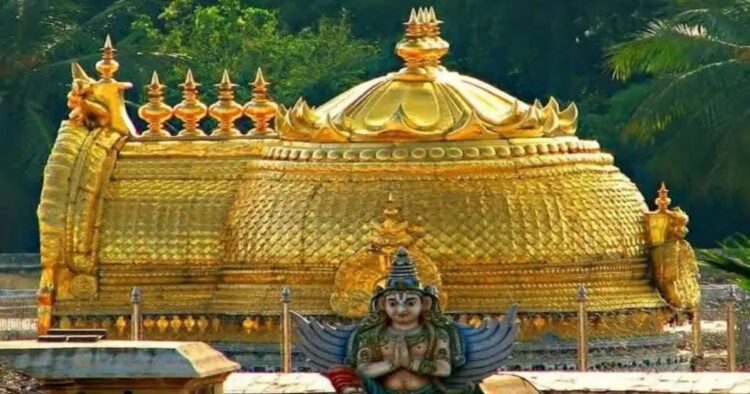KEY POINTS
- ₹10.74L gold melted, no visible temple improvements.
- Govt says money used for development, public disagrees.
- Silver melting begins, transparency questioned again.
In a recent update shared in the Tamil Nadu Assembly, Hindu Religious and Charitable Endowments (HR&CE) Minister P.K. Sekar Babu announced that gold collected from temples across the state was melted and turned into bars at the government mint in Mumbai. The interest earned from this gold is reportedly being used to develop temples. However, many people are now questioning whether this money is truly being used for public benefit, or just another government claim that remains on paper.
According to the policy note presented, as of March 31, 2025, a total of 10,74,123.488 grams of pure gold had been collected from 21 temples in Tamil Nadu. The highest contribution came from the Arulmigu Mariamman Temple in Samayapuram, Tiruchirappalli district, which alone gave 424.26 kg of gold. This massive contribution has raised eyebrows because, despite such wealth, the public still sees no improvement in temple infrastructure or benefits to the devotees.
The government claims to have formed three regional committees, each headed by a retired judge, to monitor the gold investment scheme. But what good is a committee if people still witness broken temple roads, poor sanitation, and a lack of basic facilities in many famous temples? Despite thousands of devotees visiting daily, temples are often left in poor condition, and there’s little sign of this “interest money” being used meaningfully.
The scheme itself was stopped for some time and only restarted in 2021-2022, once the government gave permission again. This gap shows how casually the state handles crores worth of temple assets, without any transparency or urgency.
Now, the Tamil Nadu government has taken a new step: they’ve started melting unused silver items from temples too. These will be turned into silver bars by private companies approved by the government. The process will be monitored by zonal committees, again led by retired judges. Melting has already started, as per the official report.
But here is the big question: What happens after all this melting and investing? Where is the money going? Who is really benefiting? Temples in Tamil Nadu are rich with gold, silver, land, and donations, yet the surrounding areas often suffer from water problems, traffic issues, and zero development. The government continues to control temple funds in the name of development, but ordinary people don’t see any results.
Many believe the HR&CE department is being used to manage temple wealth for political gain, rather than true religious or public purposes. Instead of investing in the health, education, and welfare of devotees, or helping poor pilgrims, this wealth is being locked in secret investment schemes, with no clarity or public audit.
People of Tamil Nadu have started questioning this system. They are asking: Why doesn’t the government hand back temple control to the Hindu community? Why are churches and mosques free from such interference, but temples are looted by the state?
In the name of tradition and faith, temples have received gold and silver donations for hundreds of years. But now, instead of serving the people or improving temple facilities, the government is melting these offerings and turning them into silent investments, with no visible benefit to the devotees who made them.















Comments